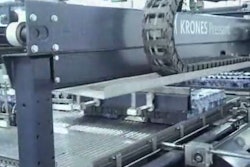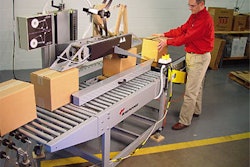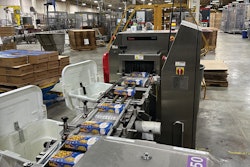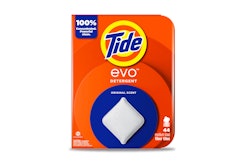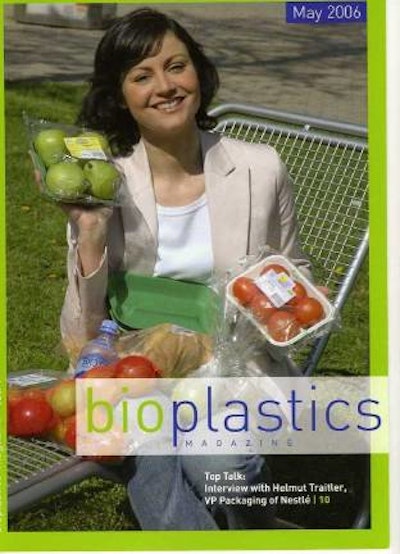
Things are getting even more serious on the sustainable front with the launch of bioplastics magazine.
It is billed as the only special-interest magazine specifically dedicated to bioplastics, plastics from renewable sources and biodegradable plastics.
The quarterly magazine from Polymedia Publisher GmbH debuted May 2006 with a 44-page folio that includes news, tutorials, and an events calendar.
In his introductory editorial, the publisher notes that a number of bioplastics are already available. “The biggest field of applications today is certainly the packaging sector: packaging for single use and with short shelf lives.”
The magazine has a strong European flavor, though coverage of stateside developments include mentioning the first commercial plant for PHA (poly-hydroxy-alkanoates): Archer Daniels Midland's plans to build the first commercial plant to produce PHA at Clinton, IA, that will have a capacity of 50ꯠ tons of yearly.
Although no timeframe is mentioned in the article, ADM’s own Web site notes a expected completion date of 2008; for more on this announcement, click here.
Nestle talks bioplastics
Anchoring the issue is a “Top Talk” interview with Nestlé vice president of packaging, Helmut Traitler, who says that Nestlé gives bioplastics a very high priority. Asked why, Traitler responds that it is due to cost competitiveness together with properties comparable to traditional polymers. “It is also an obligation towards the environment because we can prove that good environmental behavior makes good business sense,” Traitler notes.
Of the various bioplastics available, Traitler says Nestlé is most excited about PLA (polylactic acid) because it's available technologically, is developmentally advanced, and is cost-competitive.
Another promising material that he points to is Plantic® that is water soluble and degrades or composts quickly.
Hybrid bottles
Traitler also mentions looking at combinations of materials, pointing to a container structure that’s a combination of Plantic and PET. “A PET bottle with a Plantic layer is a much better barrier than PET alone and to my knowledge even better than EVOH. Even if it does not 100-percent replace fossil-fuel-based PET, we save a lot of PET and can get an enhanced oxygen barrier.”
Ed. Note:In January 2006, Amcor Australasia and Plantic Technologies Ltd. announced an alliance to “work towards the development of a new biodegradable material, which if successful, has potential to change the mainstream confectionery packaging market and provide manufacturers and retailers with a cost effective, functional and environmentally sustainable packaging solution. The collaboration will encompass a research program over two years.”
Plantic’s collaboration with Amcor aims to develop a thin and durable plastic for the flexible packaging of food and confectionery, such as chocolate bar wrappers and overwrap. To date, Plantic materials have been used as a rigid plastic in confectionery and biscuit trays. Plantic is also developing its portfolio of resins to include grades suitable for injection molding.
You can find out more about Plantic "plastics from plants" at Plantic.com.au.

